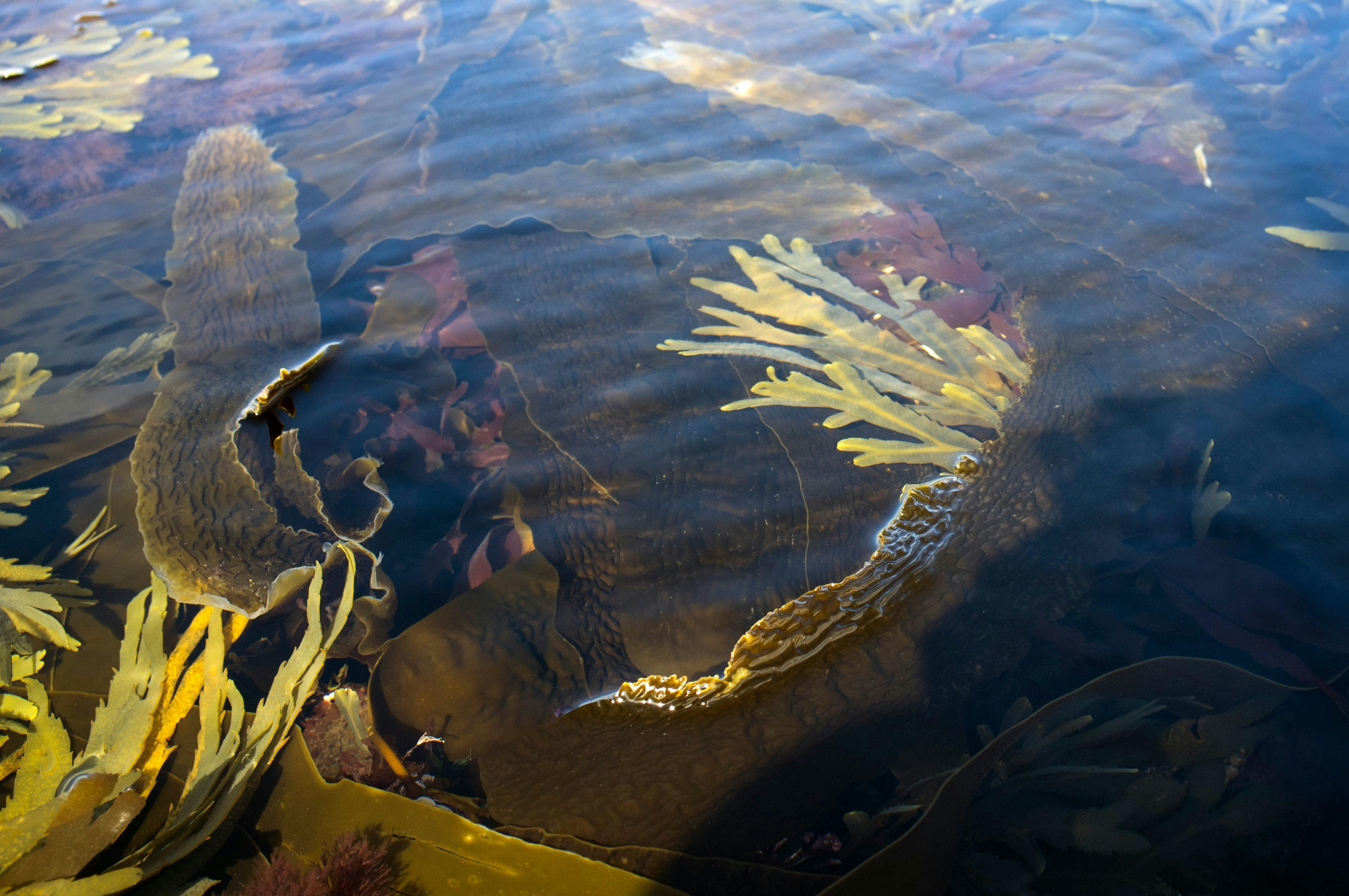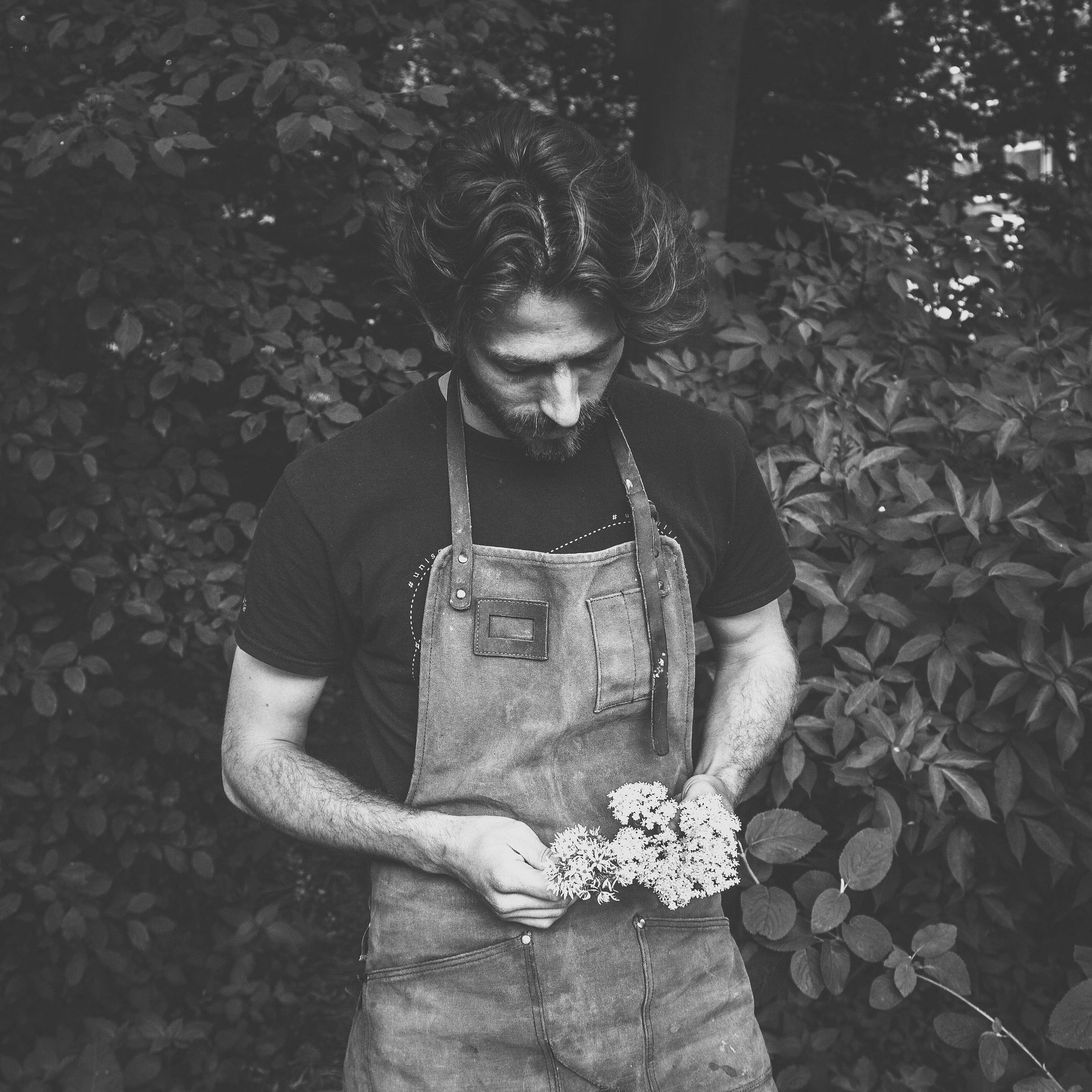It was all we had. We used it for everything, fertiliser for the cabbage and potatoes, medicine, food for the animals, and to eat… chreathnach was the treat. I remember it hanging in the kitchen to dry so we had a supply for the winter. —Jane, from Connemara, ninety-two years old
A village shop in Connemara, on the Atlantic coast of Ireland. The texture should be like velvet. Dry, yet soft and yielding. The colour, a deep inviting violet. A gratifying chew releases a complex bouquet of flavour; a rich seawater saltiness, shrouded with earthy and meaty umami undertones—moss, seabed, green, brown, roast protein, cooked fat, evolving from the sea to the meaty as the texture yields to the bite. The crisp air laced with salty traces of the sea entangled with hints of burning peat—a rich inviting grassiness—wafts through the open shop door, carrying a sense of place and finding resonance with the unfolding taste-scape as I chew.
"You can't get this texture if you dry mechanically," Rory, the shop owner, explains. There just isn't enough leeway in the drying process. The heat dries it too fast. The key to getting this texture and flavour is to dry outside, the old way, draped over rocks with an eye to the changing weather patterns. "He's been doing it like this all of his life," Rory proudly tells me about his illicit supplier, an eighty-two year old man who refuses to adapt to indoor mechanical drying, necessitated by the health authorities, and whose identity Rory adamantly refuses to share. "This box will sell out within the day. People come from all around here to get it because it has a taste they are familiar with... and I wouldn't say any more to ya even if you were God!"
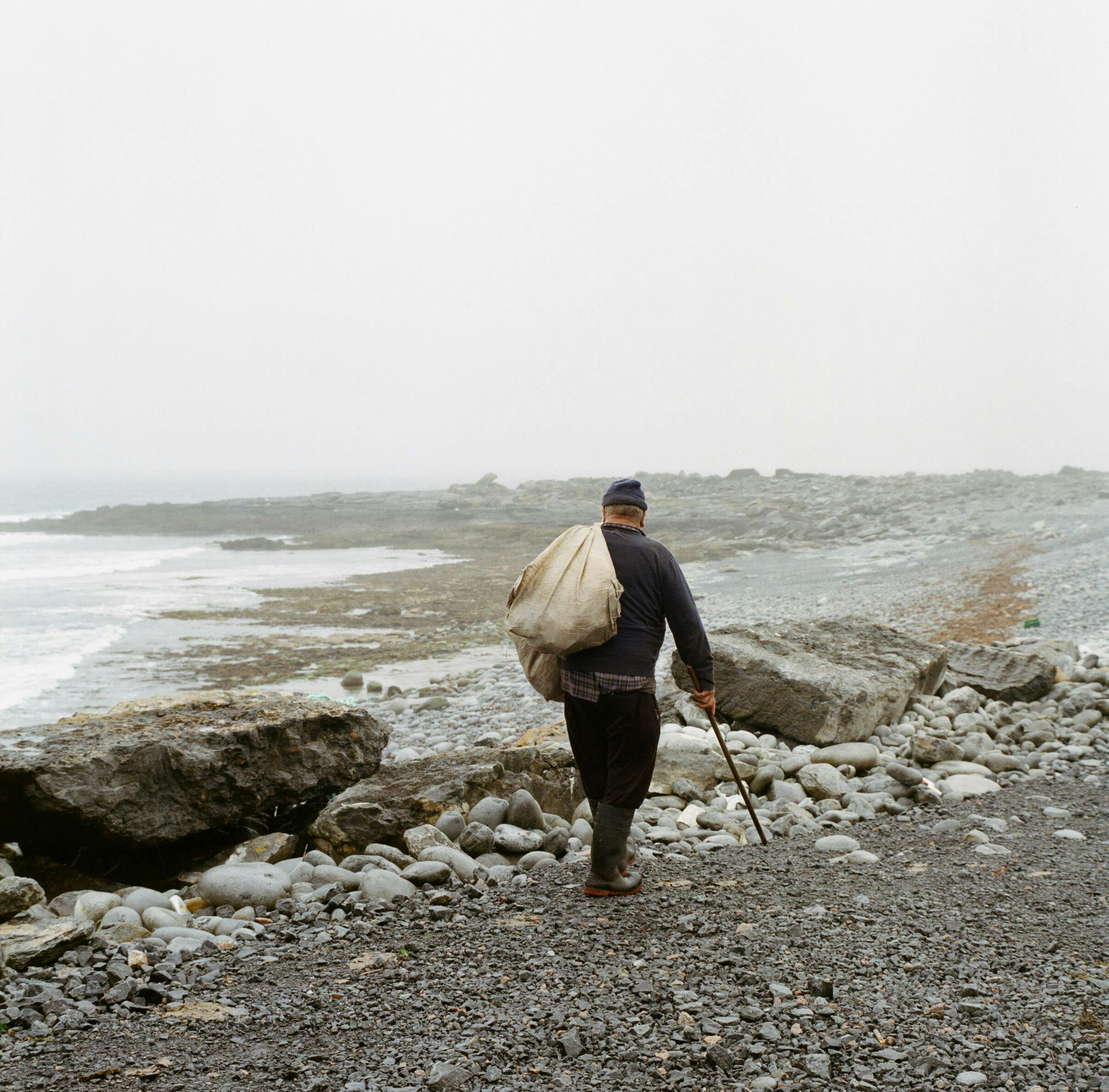
Chreathnach, the seaweed at the centre of the encounter above, is an Irish Gaelic name identifying Palmaria palmata, known more generally as dilleasc or dillisk in Ireland and dulse in the UK and elsewhere. In all the conversations during my fieldwork in Ireland, the name chreathnach was used to refer to a particularly desirable form found growing on small mussel shells clinging onto rocks at the low tide mark.
"If the weather wasn't warm enough you would have to take the small shell off, otherwise the old folk would say that the mussel would wee on the chreathnach as it was drying," says Michael, himself an old man in his late eighties, with a thin weathered face, a cap and a worn woollen jacket, who overheard my conversation with the shop owner as he put a bag of seaweed into his shopping basket with the mannerism of someone buying an everyday essential; bread, milk, seaweed. Michael then begins to explain what he knows about the process of drying: "You would wait for a sunny day and lay the chreathnach out on a rock, never on grass, turning it once in a while. You need enough consistent warmth and the right humidity and a knowledge of how to read weather patterns and the environment, a knowledge seldom found in practice now." The chreathnach in the shop was soft, subtle, pleasant, but Michael explains that when he was young he remembers it being dried as 'hard as rock' to keep over winter.
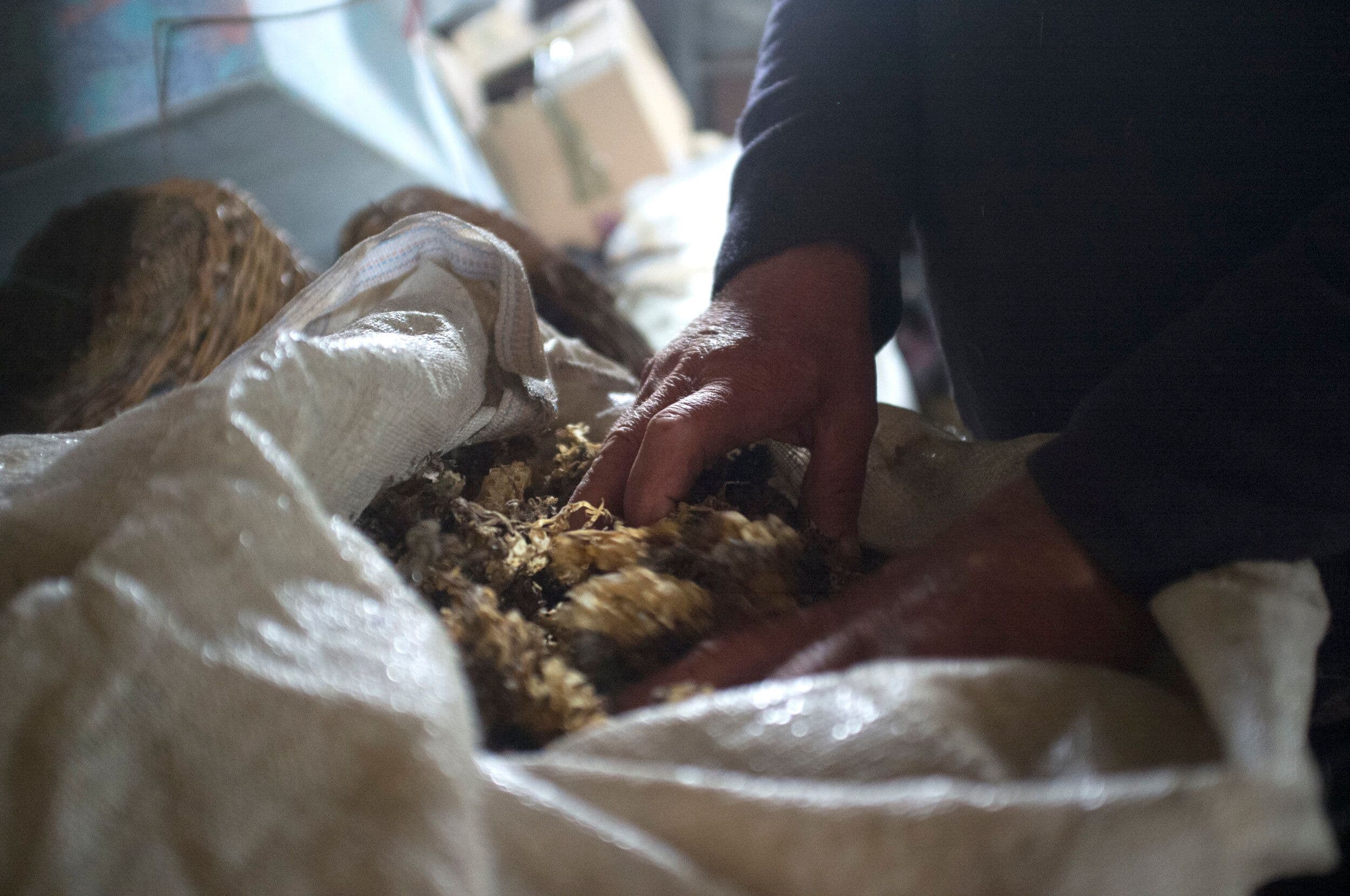
In County Claire, just south of Connemara, I was told that a generation ago gathered seaweed would cover all the fields and walls of the headland, before being driven inland to market by the only member of the community who owned a tractor. Now the son of the tractor owner sometimes drives a van full of seaweed all the way to restaurants in Paris. The family of the tractor driver has a knowledge of traditional seaweed harvesting stretching back four generations and they now operate a business, both nationally and internationally, drying and packing their wild harvests indoors. In the packing room, employees Mary and Leanne explain how they dry and pack chreathnach in different textures according to the desired moisture content. As well as being seen as a prerequisite for hygienic production methods by the Food Safety Authority of Ireland, or as a way to prevent contamination, as I was told by the seaweed harvesters, mechanical drying also allows for a larger quantity of seaweed to be dried efficiently. In contrast to mechanical drying, I also observed practices of drying outdoors for home and local use: an entire lawn covered white with carrageen (Chondrus crispus), bleached from a deep violet to a traditionally desired white colour. On the Aran Islands I was led into a shed where, in large mesh bags, amidst half finished woven willow baskets and other bric-a-brac, there was a year's supply of carrageen, gathered and dried annually by an old man and his nephew. This one, an off-yellow colour, the smell of mould lingering, and no doubt carried a taste specific to this man's family and their process. The man explained, in Gaelic, how he would take it at the onset of a cold, boiled in milk.
Andrea Pieroni, ethnobiologist and dean of the University of Gastronomic Sciences, Pollenzo, argues that traditional knowledge arrives as a process of interaction with a thing rather than being of the thing itself. It is in the way a product or resource is transformed and used that gives rise to knowledge tied to a local area and culture, embedded in a specific set of conditions developed over time and in relation to a place (Pieroni 2017). Gary Snyder, poet, essayist, and environmental activist, states in The Practice of the Wild that "[o]ur relation to the natural world takes place in a place," and it must be grounded in information and experience, and explains how that experience of intimately knowing that place has been developed through a long process of interaction (Snyder, 1990, p. 39).
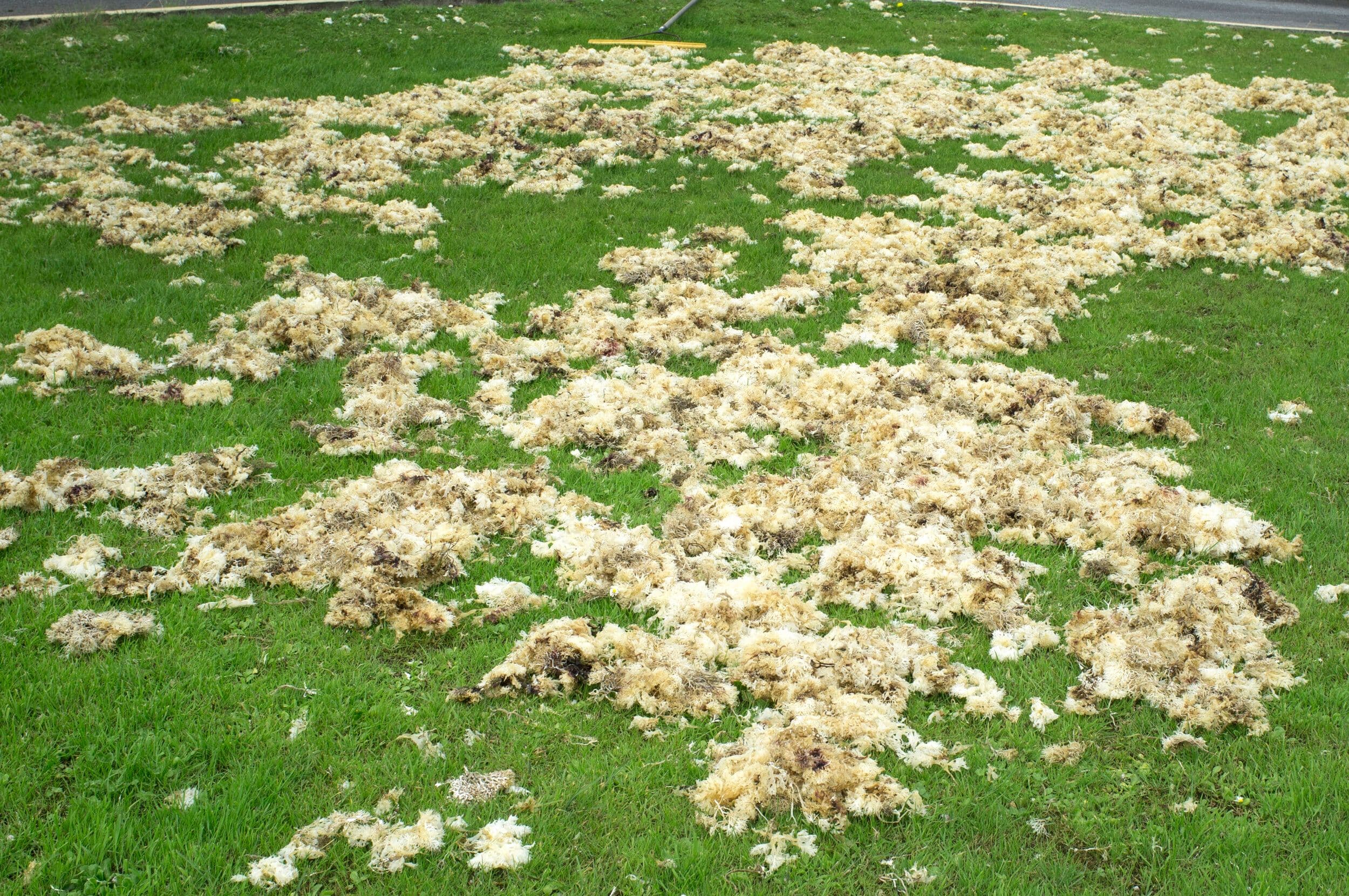
The chreathnach I tasted in the shop and its resulting flavour belonged to a place and a process born out of a connection to the land; from the location where it was found, the weather and methods employed by the man who gathered and dried it, and the final consumer who was often from the locality. The nuances of gathering seaweed and drying it outdoors, the numerous factors involved, at the periphery of the process, observed and responded to with experience, are reduced to a more simple and controlled process in mechanical drying: primarily, regulating humidity and heat in a controlled environment. The process is removed from a more deeply involved activity, from the gathering to the eating, that creates nuances in flavour arising as the result of a unique set of influences, to a more product-oriented approach with a fragmented life story. The seaweed is gathered and then put into a container to emerge as a dry product, an act which separates it physically, and I argue metaphorically, from the gatherer and the place.
Similarly, a separation between gatherer and place comes about after the introduction of mechanical harvesting. During my fieldwork in Ireland there was an ongoing court case against the government for the sale of rights to mechanically harvest an area of kelp forest in Bantry Bay, West Cork, to a multinational company, an act that local community groups and experts argued would disrupt a vital habitat for numerous different species and have a subsequent negative effect on the biodiversity of the area. In an ethnobotanical study comparing ecological knowledge held by both mechanical and hand harvesters of kelp forests in Brittany, Clément Garineaud (2015) argues that the separation of the hand and harvester from a direct interaction with the seaweed and its context distances the attention and practice of the harvester's knowledge of ecological processes surrounding the seaweed. Without practising their knowledge, harvesters lose a deeper and more intuitive understanding of the ecology surrounding the kelp forests and their role in the wider ecosystem. This understanding, Garineaud concludes, comes about through interaction with a wild landscape by touch and negotiation.
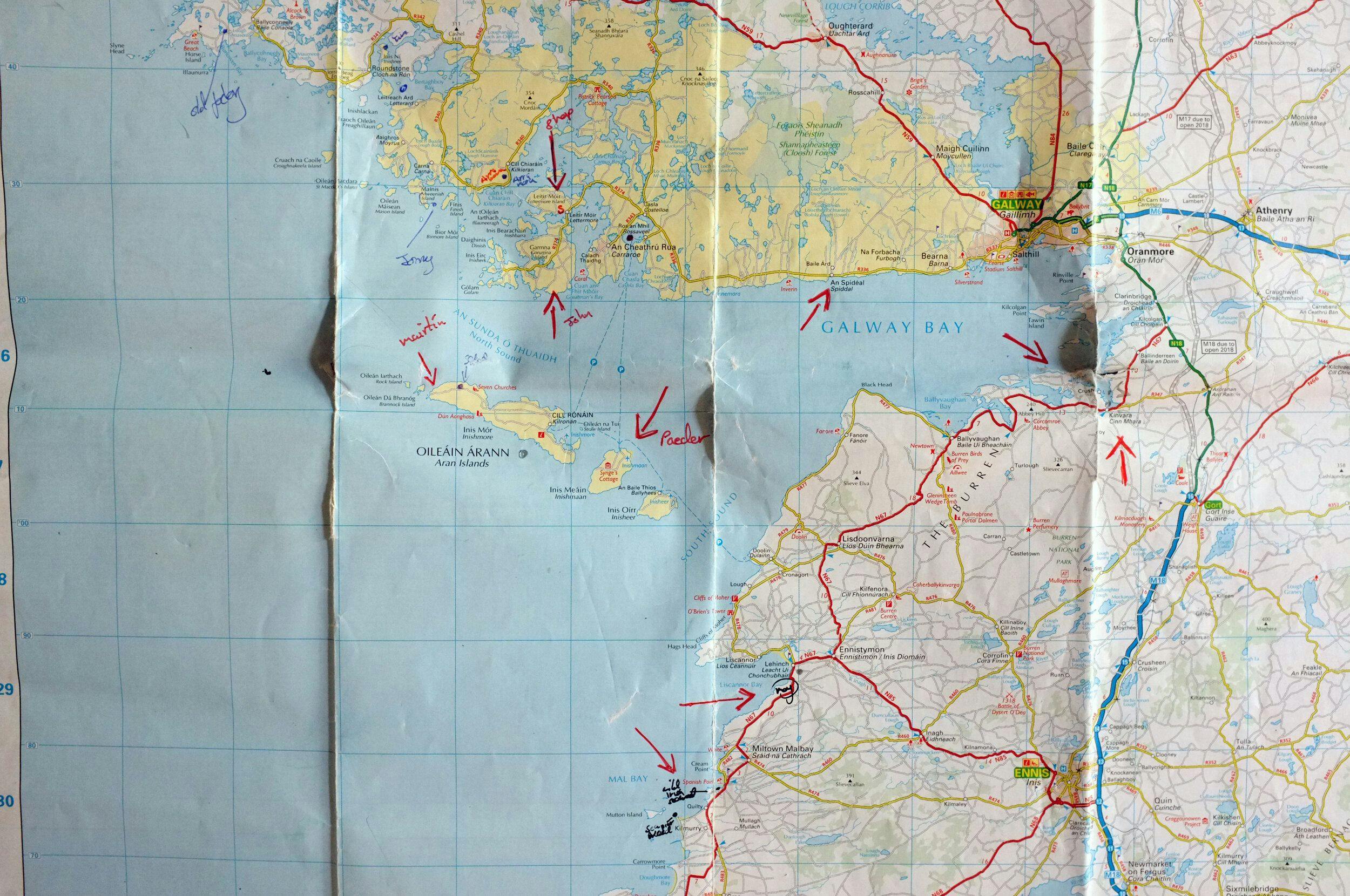
Nicola Perullo (2017), philosopher of taste and aesthetics at the University of Gastronomic Sciences, argues that we bring to taste our entire being: context, memory, history, story, weather, and so on all play a part, such that we cannot separate taste from context. In Japan, while driving along the coast on the peninsula of Noto in Ishikawa District, I vividly remember seeing the harvest of seaweed, long bull kelp, hanging to dry outside small rural dwellings. Set amidst the context of rice paddies and old wooden buildings, it made a sight such that one could imagine oneself in ancient Japan. The same sight of a line stretched between two poles with hanging seaweed, outside a wooden house, with the sea lapping behind, pervades imagery of Japanese coastal traditions: I recently saw such a scene in the anime Mushi-shi, about a wandering traveller who can communicate with spirits of the land. When one thinks of Japan and seaweed, a host of culturally tied imaginings are conjured to the palate.
With Irish seaweed, I argue that there is a disjunction between appreciation, use, and context. There is a tendency to use Irish seaweed in ways that bear Japanese connotations and uses—there is frequently talk of dashi, nori, or kombu in clarifying the identity of a species and relating it to a use. In restoring identity to seaweed's use within a traditional context in Ireland, I think there needs to be a reclaiming of the imagery around it, its history, its stories, and the knowledge that has developed and been passed down among coastal people in Ireland for centuries. It is in turning our attention to the interconnectedness between seaweed, place, and people through the use of ethnobotanical and gastronomic insights, that we can add value to a locally embedded knowledge.
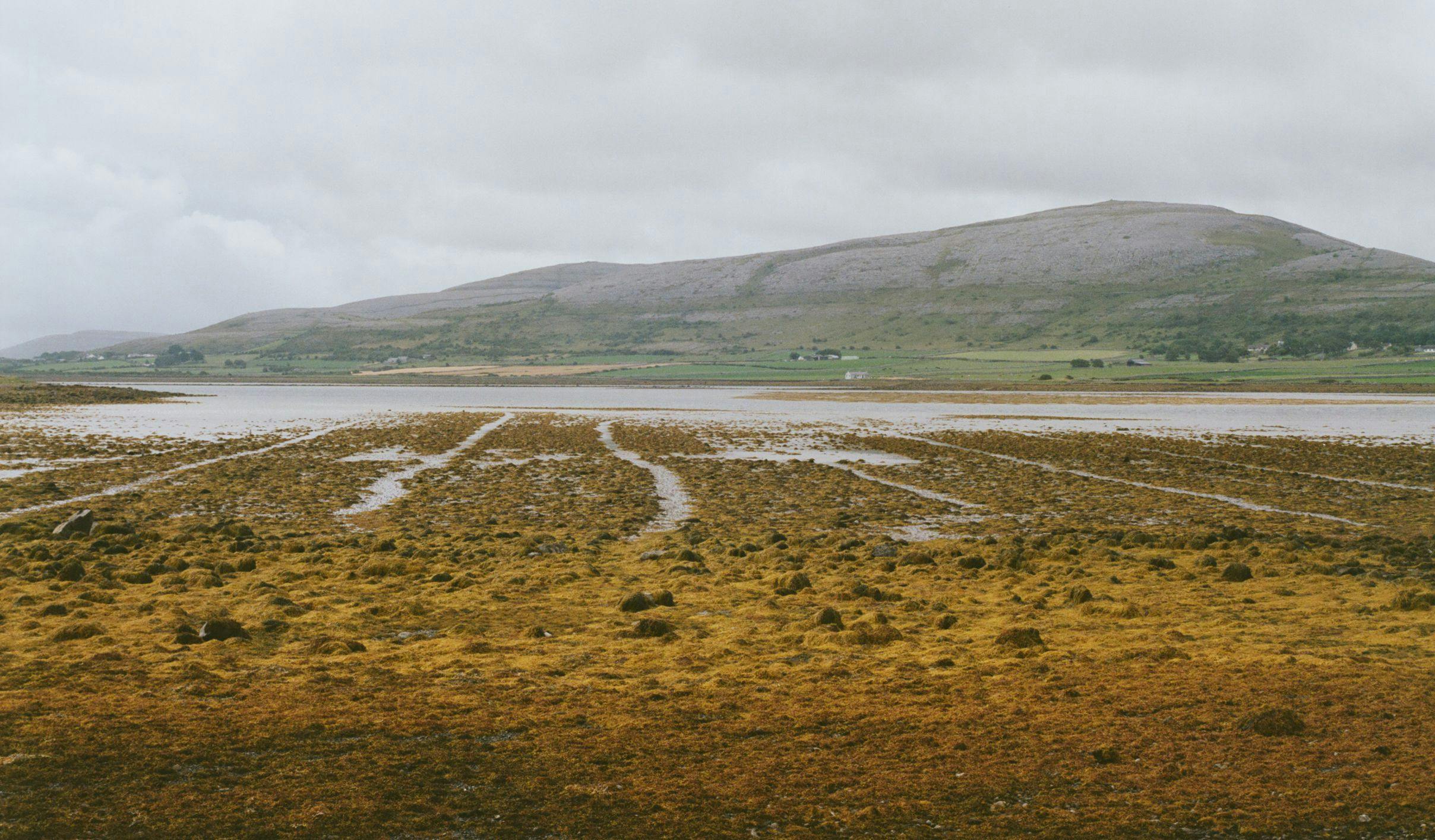
When seaweed becomes distanced from its own life-story, it is seen merely as a resource to be extracted, and traditional knowledge of its use is undervalued, then the numerous meanings and roles that seaweed fulfils are easily overlooked. I argue that taste, and finding nuance within taste in the form of flavour, is a vital form of knowledge in the interaction with our land. Tasting for flavour is at the very root of how we interact with our surroundings, articulates flavourologist Gordon Shepherd (2012), when he sheds light on how we as a species 'smell' through our taste buds. Taste and its intimate partner pleasure are intrinsic ways we can value biodiversity. And not just biodiversity, but the diversity of our interaction with the wild and the landscape, of craft, story, community, and livelihood. Despite receiving very little attention in ethnobiological and food studies, taste and pleasure play a fundamental role in our coexistence with others, both plant and animal, and in the ways we value and find meaning in the world. If we lose our search for definition within taste then we open the way to homogenization, exploitation, and a resulting loss of diversity in life and culture.
Taste can tell a tale as well as words. In nuances of flavour can be found the way a current changes the temperature of water around a headland, the way the sea crashes and squalls, the way the wind breaks, the way nutrients are carried around, the weather patterns, the health of the sea, its marine life and seaweed populations, and a people's history of being intimately tied to a place: all tell a tale and leave their resonance in flavour.
References
Baker, N. 2017. Local Fears Overshadow Bantry Bay Kelp Harvesting Project. Irish Examiner. Garineaud, C. 2015. Pratiques Manuelles ou Mécanisées: La Part de la Main dans les Perceptions Sensorielles et dans les Savoirs Ecologiques. Exemple des Récoltants d'Algues en Bretagne. Ethnographiques. No Author. 2019. Mechanical Harvesting Threat to Kelp in Bantry Bay, Court Hears. Climatechange.ie. Pieroni, A. 2017. Ethnobotany and Traditional Ecological Knowledge. Lecture series for Master of Gastronomy. Pollenzo, Italy: University of Gastronomic Sciences. Perullo, N. 2017. Taste as Experience: The Philosophy and Aesthetics of Food. New York, NY: Columbia University Press. Snyder, G. 1990, p. 39, The Place, The Region, and the Commons. In: The Practice of the Wild. Berkeley, CA: Counter Point Press. Shepherd, G. 2012. Neurogastronomy: How the Brain Creates Flavor and Why It Matters. New York, NY: Columbia University Press.
Selected further reading on Irish seaweed:
- Guiry, M. D. and Hession, C. 1998. The Seaweed Resources of Ireland. In: A. T. Critchley and M. Ohno (eds.) Seaweed Resources of the World. Hakone: Japan International Cooperation Agency.
- Guiry, M. D. 2012. A Catalogue of Irish Seaweeds. Gantner Verlag K.G, Vaduz.
- Guiry, M. D. and Morrison, L. 2013. The Sustainable Harvesting of Ascophyllum nodosum (Fucaceae, Phaeophyceae) in Ireland, with Notes on the Collection and Use of Some Other Brown Algae. Journal of Applied Phycology 25:1823–1830.
- Guiry, M. D. The Seaweed Site: Information on Marine Algae. (a useful website for all things Irish seaweed related, created by former professor of Botany at Galway University)
- Mac an Iomaire, S. 2000. The Shores of Connemara. Translated from Gaelic by Padraic de Bhaldraithe. Co. Galway: Tír Eolas.
- Morrissey, J. 2001. On the Verge of Want: A Unique Insight into Living Conditions Along Ireland's Western Seaboard in the Late 19th Century. Dublin: Crannog Books.
- Mac Con Iomaire, M. 2014. Food as 'Motif' in the Irish Song Tradition. Dublin: Dublin Institute of Technology.
- Mac Monagail, M, and Morrison, L. 2020. The Seaweed Resources of Ireland: A Twenty-first Century Perspective. Journal of Applied Phycology 32:1287–1300.
- McKenna, S. 2013. Extreme Greens: Understanding Seaweeds. Dublin: Estragon Press.
- Mahon, J.P. 2018. Meet JP McMahon, the Chef who wants seaweed to be Ireland's National Vegetable. Financial Review 4 April 2018.
- Magan, M. 2019. Seaweed: Ireland's Nutritional Gift from Winter: Ancient Seaweed Traditions are Still Practised in Ireland—and for Good Reason. The Irish Times 26 January 2019.
- Robinson, T. 1986. The Stones of Aran: Pilgrimage. Dublin: The Lilliput Press Ltd. Pp. 131–158.
- Robinson, T. 2011. Connemara: A Little Gaelic Kingdom. London: Penguin.
- Rhatigan, P. 2009. The Irish Kitchen Cookbook. Bath, UK: Parragon Books.
- Pérez-Lloréns, J.L., O.G. Mouritsen, P. Rhatigan, et al. 2020. Seaweeds in Mythology, Folklore, Poetry, and Life. Journal of Applied Phycology 32:3157–3182
